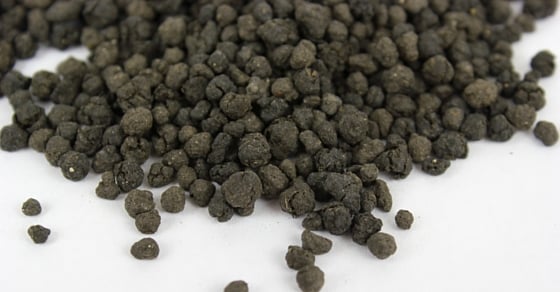It is an undisputed fact that the world population is growing and has, in fact, topped 7 billion people. Feeding those 7 billion people is a massive challenge for the infrastructure of every nation on our planet, with everything from finding sufficient land on which to farm and raise livestock, and providing nutrients for that land so that it will grow wholesome food, to transporting the harvested plants to processing plants and markets.
Another aspect of this food chain is the organic waste that is generated throughout the process. Organic waste is any type of material that is an unused byproduct of another process and has a cellulosic structure that can be broken down. Including everything from the stalks left over after the wheat has been harvested, to the manure generated by animals after their meals, organic waste is also multiplying at an increasing rate. With more space needed to occupy those 7 billion people, there is not much room left on planet earth for storing organic waste. Overflowing landfills and organically saturated soils which leach both nutrients and waste into local water supplies are only two of the many issues arising as we struggle to find creative solutions to handle the natural abundance of our organic waste.
This article takes a look at the three central types of organic waste- agricultural, industrial, and municipal- and examines the challenges and opportunities associated with organic waste generation.
Agricultural Waste
Agricultural waste includes livestock manure and a variety of compostable items, such as those grain stalks mentioned above. Once upon a time, farmers would set aside part of their land as a composting ground for the manure and compostable materials generated in the process of growing plants and raising animals. With 7 billion people on the planet, land is now at a premium and there are few farms left with space available to allow manure to decompose and compost to mature at a slow, natural rate. This has resulted in many farmers having their manure hauled elsewhere, a practice limited by the costly expense of transporting a moisture-laden material more than a few miles from the farm.
Industrial Waste
The second type of organic waste is industrial. This includes the organic byproducts of processes in a variety of industries. Restaurants generate a large amount of organic waste, and according to restaurants.com, as much as 33 million tons of food are thrown out each year in the U.S. alone. Food spoilage in transit also generates organic waste at the distribution, market and grocery stages.
Another source of industrial organic waste is through Dissolved Air Flotation, or DAF, technology, which is increasingly being used in a variety of industries to remove suspended solids, fats, oils and greases from water-based solutions. This method of capturing particles is more efficient than older methods, which required waiting until solids would naturally settle via gravity at the bottom of sludge ponds (also requiring a lot more space). DAF also allows for the early removal of non-biological pollutants, such as petrochemicals, which results in a sludge that is purely organic in nature. Examples where DAF technology is being used include fish farming, meat processing, and paper and pulp manufacturing. DAF is increasing the amount of potable water available, but it is also generating large amounts of thick organic sludge which must somehow be disposed of—or, ideally, recycled.
Municipal Waste
The third type of organic waste generated today is municipal waste. This is the trash that is collected by every city and town across each nation. According to the EPA, the U.S. generated 4.4 pounds of municipal waste per person per day in 2013, but only recycled or composted 34.3 percent of that material. Organic components make up over half of municipal waste, and include a variety of biosolids ranging from lawn clippings and trimmed branches, to spoiled food and a wide assortment of paper and cardboard products. While many European communities mandate the separation of all organic materials at the source (i.e., the home or business), this is not the case in the U.S., or in most countries around the world. Instead, the organic waste is mixed with inorganic garbage, sealed inside plastic bags, and dumped into overflowing landfills.
Processing Organic Waste into Fertilizer
There are many nutrients hidden in all three types of organic waste, and these nutrients are urgently needed to fertilize the next generation of crops. Fortunately, there are some creative minds at work on innovative answers to harnessing organic waste. One such solution is processing those wastes through organics granulation, which involves the drying and granulation of that organic waste into fertilizer pellets. In addition to removing organic wastes from overburdened farms and landfills, organics granulation creates a much-needed product that revitalizes farmland and helps the earth maintain its ability to feed more than 7 billion people.
FEECO’s Experience in Transforming Organic Wastes into Valuable Products
FEECO has worked with organic wastes since our founding in 1951. From then on, we’ve built a repertoire in turning agricultural, industrial, and municipal wastes into organic-based fertilizer products. From lab testing in the FEECO Innovation Center, to engineering, process development, design and equipment manufacturing, our team is highly skilled in the field of organics granulation.
The summary below highlights projects from our experience with each type of organic waste:
Agricultural Waste. FEECO supplied a turnkey organic fertilizer plant to Premium Standard Farms in Missouri, USA. The plant agglomerated raw and digested hog manure, using biogas to offset the heat requirements of the process. The overall set-up created a fertilizer-grade organic product that could be applied to fields with traditional fertilizer equipment. To read the complete project profile, click here.
Industrial Waste. Waste paper sludge is typically a landfilled byproduct as a result of industrial processing. Encap LLC recognized this waste problem and the opportunity in turning it into a useful, marketable product. That’s where FEECO stepped in. FEECO designed and manufactured a complete system to process the waste paper sludge and transform it into a variety of lawn and garden products. To read the complete project profile, click here.
Municipal Waste. FEECO has also designed bio-fertilizer granulation plants for food waste and biosolids to name a few. Each have been custom designed and built to suit the unique needs of the material being processed.
Conclusion
FEECO’s organics granulation system is a sound solution to the problem of agricultural, industrial, and municipal waste generation and disposal. While most companies specialize in a single part of the process, FEECO offers customers a unique advantage in that we can provide them with a complete solution, including everything from feasibility testing in the FEECO Innovation Center, through the design and manufacturing of custom equipment.
Visit our Organic Fertilizer System webpage to learn more about our equipment offerings, or contact a FEECO expert today. We look forward to learning more about your project.



